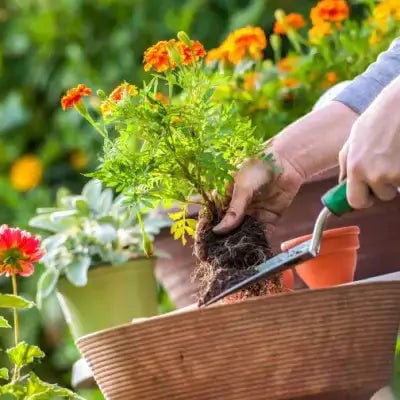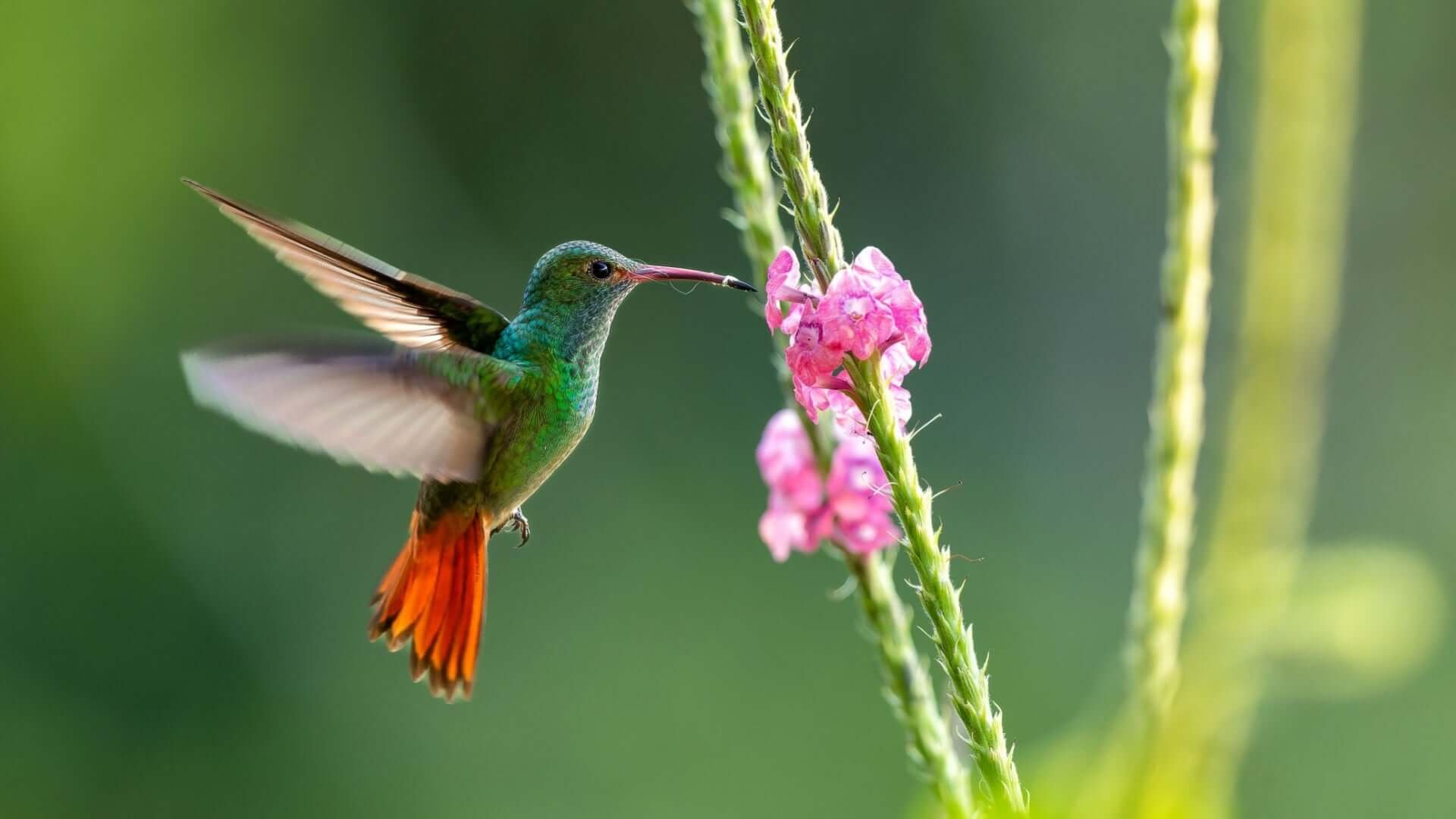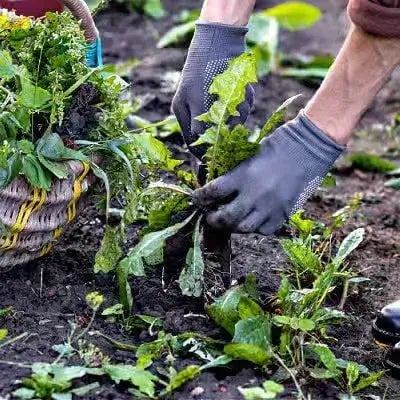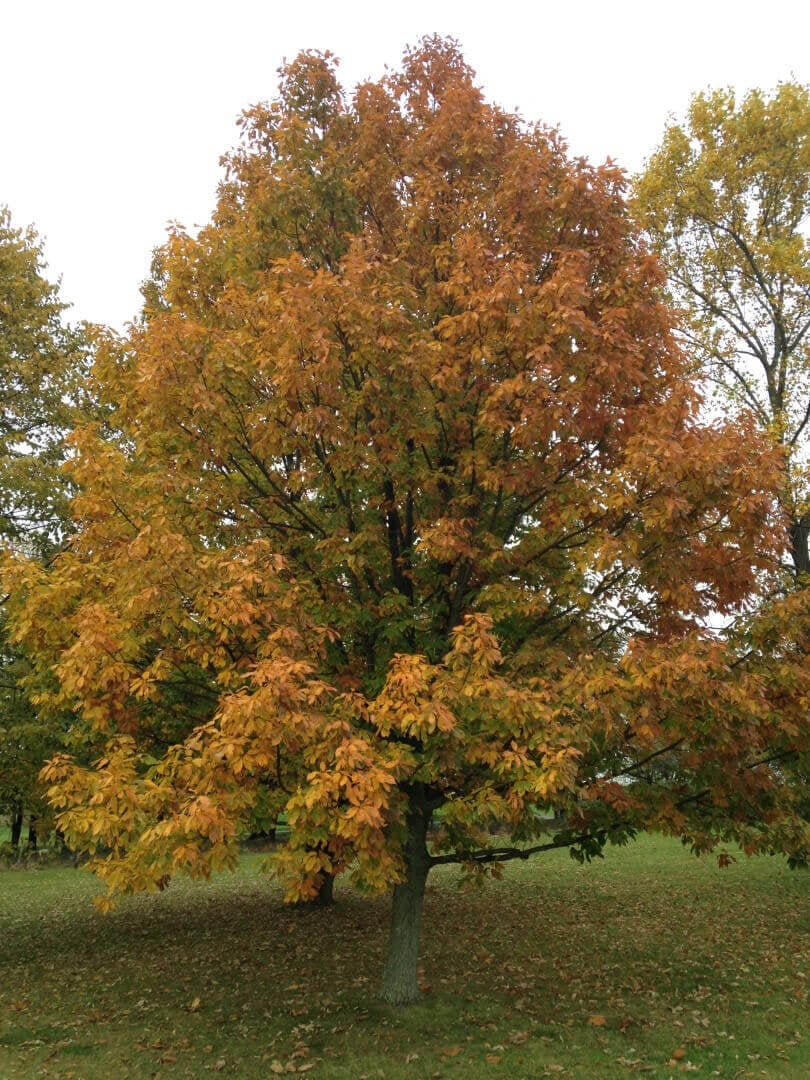10 Environmentally Safe Weed Control Methods
The demand for sustainable and environmentally safe weed control methods has increased as the world becomes more conscious of environmental issues. This article explores ten effective environmentally safe weed control methods that help manage weed populations while minimizing harm to the ecosystem.
Mulching Organic
mulches create a physical barrier that prevents weed seeds from germinating and emerging. Inorganic mulches like plastic sheeting block sunlight, inhibiting photosynthesis in weed seedlings. Mulching prevents weed growth, retains soil moisture, and regulates temperature, benefiting crop growth.
Hand Pulling and Hoeing
Manual methods like hand pulling and hoeing are labor-intensive but effective ways to control weeds. Hand pulling involves removing weeds by hand, including their roots, while hoeing involves cutting weeds just below the soil surface using a hoe. These methods benefit small-scale gardening or areas where sensitive plants are growing, as they have minimal environmental impact and allow for selective weed removal.
Manual weed control methods, such as hand pulling and hoeing, may be considered traditional approaches, but they remain fundamental and practical techniques in managing unwanted vegetation. These methods, though labor-intensive, offer a range of benefits that contribute to sustainable agriculture and ecosystem health. Hand pulling, or hand weeding, involves physically removing weeds from the soil by hand.
While this method demands considerable time and effort, it provides precision unmatched by many other weed control methods. Hand pulling allows for the selective removal of individual weeds without disturbing the surrounding crops. This precision is precious in organic farming systems, where chemical herbicides are not used.
Moreover, hand pulling reduces the risk of herbicide-resistant weed populations developing, which is a growing concern in modern agriculture. Hoeing is another labor-intensive yet effective manual weed control technique. It involves using various types of hoes to cut or uproot weeds from the soil. This method is particularly efficient for larger areas as it covers more ground than hand pulling.
Hoeing disrupts weed growth and the soil surface, breaking the soil crust and allowing water to infiltrate more easily. It can enhance water conservation and reduce runoff, improving soil health. One significant advantage of manual weed control methods is their minimal environmental impact. Unlike chemical herbicides, hand pulling and hoeing do not introduce harmful substances into the environment.
It aligns well with the principles of sustainable and environmentally friendly farming practices. These methods can also be integrated into diverse cropping systems, helping maintain biodiversity and a healthier agroecosystem. While mechanization and technology have revolutionized agriculture, manual weed control methods continue to have their place. They provide employment opportunities, especially in rural communities, contributing to local economies.
Furthermore, these methods can be a part of integrated weed management strategies that combine various approaches to achieve more sustainable and effective weed control.
However, it's essential to acknowledge the limitations of manual weed control methods
The labor intensity can be a significant drawback, especially in large-scale agricultural operations. Their precision, environmental friendliness, and compatibility with organic farming practices make them essential tools in weed management, particularly in small-scale and diversified farming systems.
By integrating these methods into holistic weed control strategies, farmers can strike a balance between effective weed management and the preservation of the environment. Cultural Practices Adopting specific cultural practices can help prevent weed growth. These practices include proper crop spacing, maintaining healthy soil fertility, and using cover crops. Dense crop stands shade the soil, limiting light availability for weed seed germination. Cover crops, like clover, can be planted to outcompete weeds for resources and provide additional benefits like soil improvement.
Flame Weeding
Flame or thermal weeding involves using propane torches to apply brief bursts of heat to weed foliage. The heat ruptures plant cells and causes them to dry out, killing the weeds. This method is particularly effective for controlling weeds in driveways, sidewalks, and other hardscape areas, reducing the need for chemical herbicides.
Bioherbicides
Bioherbicides are naturally occurring or genetically modified microorganisms that target specific weed species. These microorganisms infect weeds, causing disease and eventually killing them. Bioherbicides are highly targeted and have lower environmental impacts than broad-spectrum chemical herbicides. Research in this field is ongoing, aiming to develop effective and safe alternatives to traditional herbicides.
Herbivory and Grazing
Introducing or promoting herbivores that feed on weeds can provide a natural and sustainable weed control solution. Animals such as goats, sheep, and certain insects have been used for targeted grazing to reduce weed populations. This method controls weeds and provides an additional food source for livestock.
Solarization
Solarization involves covering moist soil with transparent plastic sheets during hot summer months. The trapped solar heat raises soil temperatures to levels that kill weed seeds, seedlings, and many soil-borne pathogens. This method is effective for annual and perennial weeds and helps rejuvenate the soil by reducing pest populations.
Vinegar-Based Herbicides
Vinegar-based herbicides, or acetic acid, are natural alternatives to synthetic chemical herbicides. These herbicides disrupt plant cell membranes, causing dehydration and tissue damage. While they can be effective for small-scale weed control, they may also affect non-target plants, so caution is needed during application.
Mechanical Weed Control
Mechanical methods, such as rotary cultivators and harrows, can disrupt weed growth and bury weed seeds. These machines cultivate the soil, disturbing weed seedlings and preventing their establishment. Mechanical weed control is commonly used in organic farming systems and reduces the need for chemical herbicides.
Use of Natural Mulches
Certain natural materials, such as straw, wood chips, and leaves, can be used as mulches to suppress weed growth. These materials block sunlight, inhibit weed germination, and break down over time, contributing organic matter to the soil and improving its structure.
As concerns about environmental sustainability continue to rise, developing and adopting environmentally safe weed control methods have become crucial.
These ten methods offer effective alternatives to traditional chemical herbicides, allowing for the management of weed populations while minimizing harm to the ecosystem. By incorporating these methods into agricultural and landscaping practices, we can promote healthier ecosystems, improve soil quality, and reduce the negative impacts of weed infestations on both local and global scales.
Identifying and Removing the Most Troublesome Weeds
1. Dandelions
Dandelions are the most identifiable garden weeds because of their brilliant yellow blooms and signature puffball seed heads. Their status as charming spring indicators remains despite their speedy spread through windborne seeds and deep-reaching taproots. Deep soil penetration by the taproot creates significant removal challenges for this plant. Any remaining piece of the root enables the plant to regrow.
Identification: The identification features include serrated lance-shaped leaves forming a ground-level rosette and hollow stems containing milky fluid and producing yellow flowers on top.
Removal Tips: To effectively eliminate dandelions, you must excavate their entire taproot using either a hand weeder or a specialized dandelion fork. You can pull the plant by hand when the soil moisture is high, although complete root removal is essential.
2. Crabgrass
The summer annual weed crabgrass flourishes in warm temperatures and readily spreads throughout lawns or garden beds. This plant develops in flat clumps with stems that extend outward like crab legs. Crabgrass spreads quickly and aggressively during warm weather, allowing it to take over thin or neglected lawns quickly.
Identification: This grass stays low to the ground and shows off its light-green color through its branching stems, which spread across the earth. Seed heads resemble finger-like spikes.
Removal Tips: Small crabgrass infestations require hand-pulling before the plant produces seeds. A thick and vigorous lawn helps to naturally prevent crabgrass infestations, and mulch in garden beds prevents crabgrass seed germination.
3. Bindweed
Because its trumpet-shaped white flowers resemble those of morning glory, bindweed is a perennial weed that produces extensive tangled vines. Once established, bindweed develops deep roots and rhizomes, making eradication challenging. The weed wraps itself around plant stems, blocking sunlight exposure and reducing necessary airflow.
Identification: The plant's leaves are arrowhead-shaped, its flowers resemble white funnels, and it grows like a vine. The stems of this plant can either extend across the ground or ascend structures and other vegetation.
Removal Tips: Consistently remove new plant growth as soon as it emerges to deplete root energy reserves gradually. Applying thick mulch or landscape fabric over the soil effectively prevents sunlight from reaching it. Chemical treatments are used for widespread infestations but ensure precise application to protect surrounding plants.
4. Chickweed
As a cool-season annual plant, Chickweed displays small white flowers and flourishes best in moist and shaded environments. Its seeds sprout rapidly during spring and autumn, forming thick green layers that prevent other young plants from developing. Since Chickweed features a shallow root system, it can be easily removed quickly.
Identification: The plant features opposing oval-shaped leaves and white star-shaped flowers that appear delicate. The stems frequently exhibit a fragile line of hair.
Removal Tips: Remove young plants by hand-pulling or hoeing before they reach the flowering stage and produce seeds. Enhancing drainage in damp garden areas and reducing excessive shade exposure can discourage chickweed growth.
5. Lamb's Quarters
Lamb's quarters proliferate and reach several feet tall, and they are known as wild spinach. While the leaves of this plant can be eaten, they become problematic weeds in vegetable gardens during their mature stage. Every plant can generate tens of thousands of seeds, resulting in its swift proliferation within fertile soil.
Identification: A powdery substance covers the undersides of green-gray leaves, which form diamonds or triangular shapes. Stems may appear striped with purple tints.
Removal Tips: Extract immature plants from wet soil to guarantee complete root system removal. Cut larger plants at their base before flowering to prevent seed dispersion.
6. Purslane
The purslane leaves resemble succulents because they are fleshy, while their stems are reddish. Purslane grows best when exposed to warm and dry environments and spreads across sunny outdoor areas like sidewalk crevices and garden beds. Its slightly lemony flavor and high nutrient value attract some gardeners, yet it poses an invasive threat when left unchecked.
Identification: Clusters of shiny spatula-shaped leaves grow along thick reddish stems which stretch outwards. At the stem tips, small yellow flowers appear.
Removal Tips: Ensure complete removal of purslane plants, including their roots, since any remaining stem segments can regrow. Do not add plants to compost once they start producing seeds because these seeds can stay viable under challenging conditions.
7.Pigweed
Pigweed encompasses several related species, such as redroot and smooth pigweed, rapidly dominating disturbed garden soils. These quick-growing annual plants create thousands of seeds and reach multiple feet tall, enabling them to block sunlight from surrounding vegetation while absorbing excessive nutrients.
Identification: The plant possesses reddish or green stems and bears tiny flowers clustered densely near its upper regions. Leaves may appear oval or lance-shaped.
Removal Tips: Young plants should be removed early, through hoeing or pulling, before they start flowering. Apply a dense mulch layer in your garden beds to reduce seed germination. New seedlings are most likely to appear after soil cultivation, so checking for them frequently is necessary.
8. Creeping Charlie (Ground Ivy)
Creeping Charlie spreads through stolons. As a perennial weed, it can rapidly cover lawns, flower beds, and shaded spaces. It creates dense ground coverage that smothers other valuable plants. When crushed, its scalloped leaves, combined with a minty scent, help identify this plant.
Identification: The plant features kidney—or heart-shaped leaves with scalloped edges. In spring, it produces purple flowers. The plant's stems stretch across the ground and develop roots at the leaf nodes.
Removal Tips: Soil moisture aids in pulling weeds but requires careful removal of stolons. When possible, modify growing conditions to benefit grass and garden plants, as enhanced drainage and sunlight exposure can discourage ground ivy growth.
Best Practices for Weed Control
Early Intervention: Effective weed control requires removing weeds before they produce seeds. Each plant produces thousands of seeds that stay viable for many years.
Proper Disposal: Do not add weeds with seed heads to your compost pile. The composting process will destroy weed seeds only if it achieves enough heat.
Mulching: A layer, or 2-3 inches, of organic mulch, such as straw or shredded leaves, prevents weed seeds from sprouting while preserving moisture in the soil.
Cultural Methods: Adequate fertilization combined with proper watering and plant spacing creates conditions that discourage weed growth by giving healthy plants dominance.
Physical Barriers: Both landscape fabric and cardboard act as barriers, preventing sunlight from reaching weed seeds and decreasing germination rates.
Manual Removal: The best results are achieved by hand-pulling weeds and hoeing or employing specialized weeding tools. The soil should be worked on after it has been either rained upon or watered to facilitate easier weed removal.
Read more

These easy but powerful methods allow fresh flowers to stay beautiful for multiple days. With appropriate maintenance, flowers will remain fresh, whether native perennials or traditional flower var...

Imagine squandering money on something that requires you to work longer hours, using machinery that emits carbon emissions, eliminates wildlife habitats, and introduces harsh chemicals into the soi...





